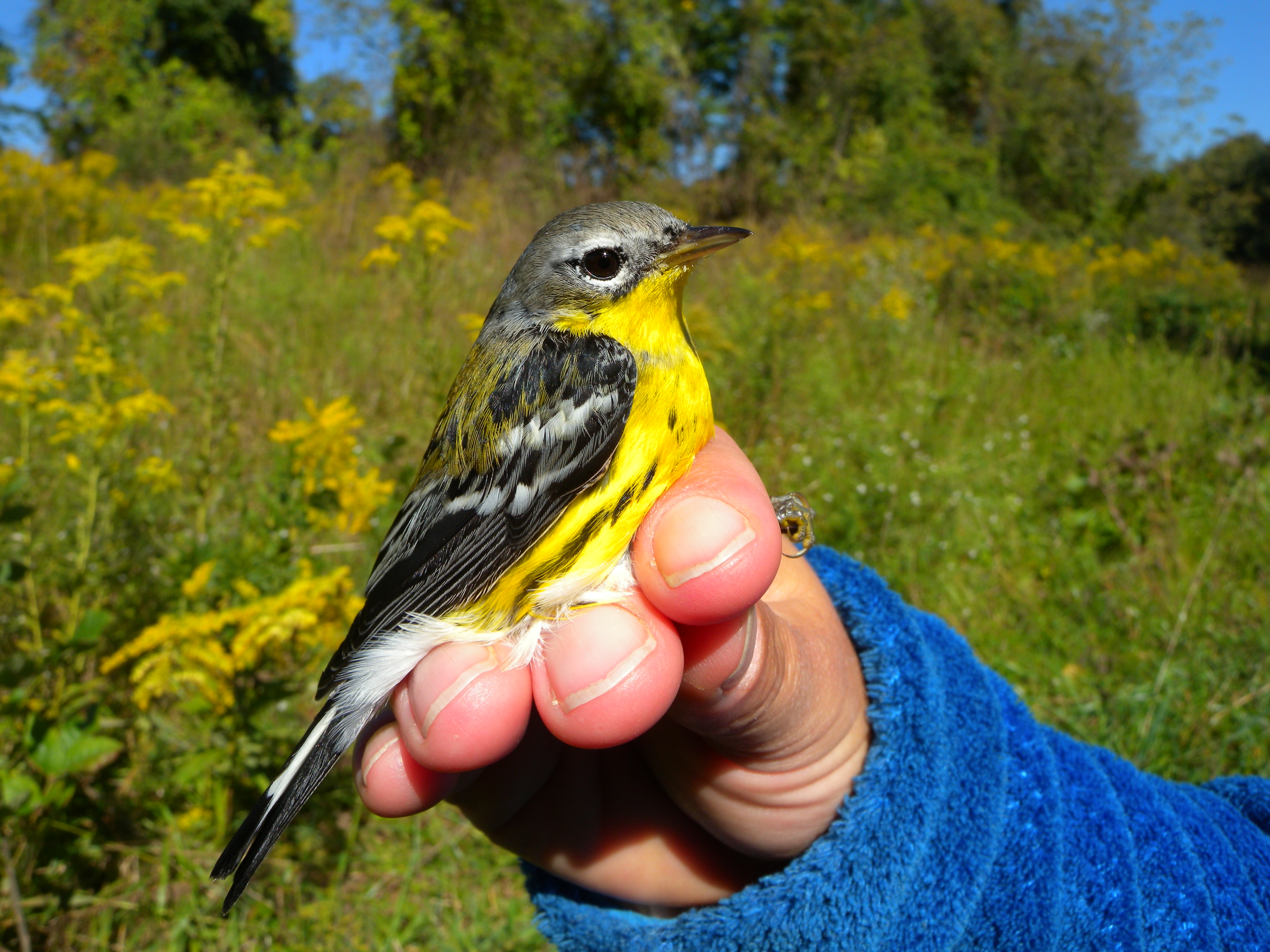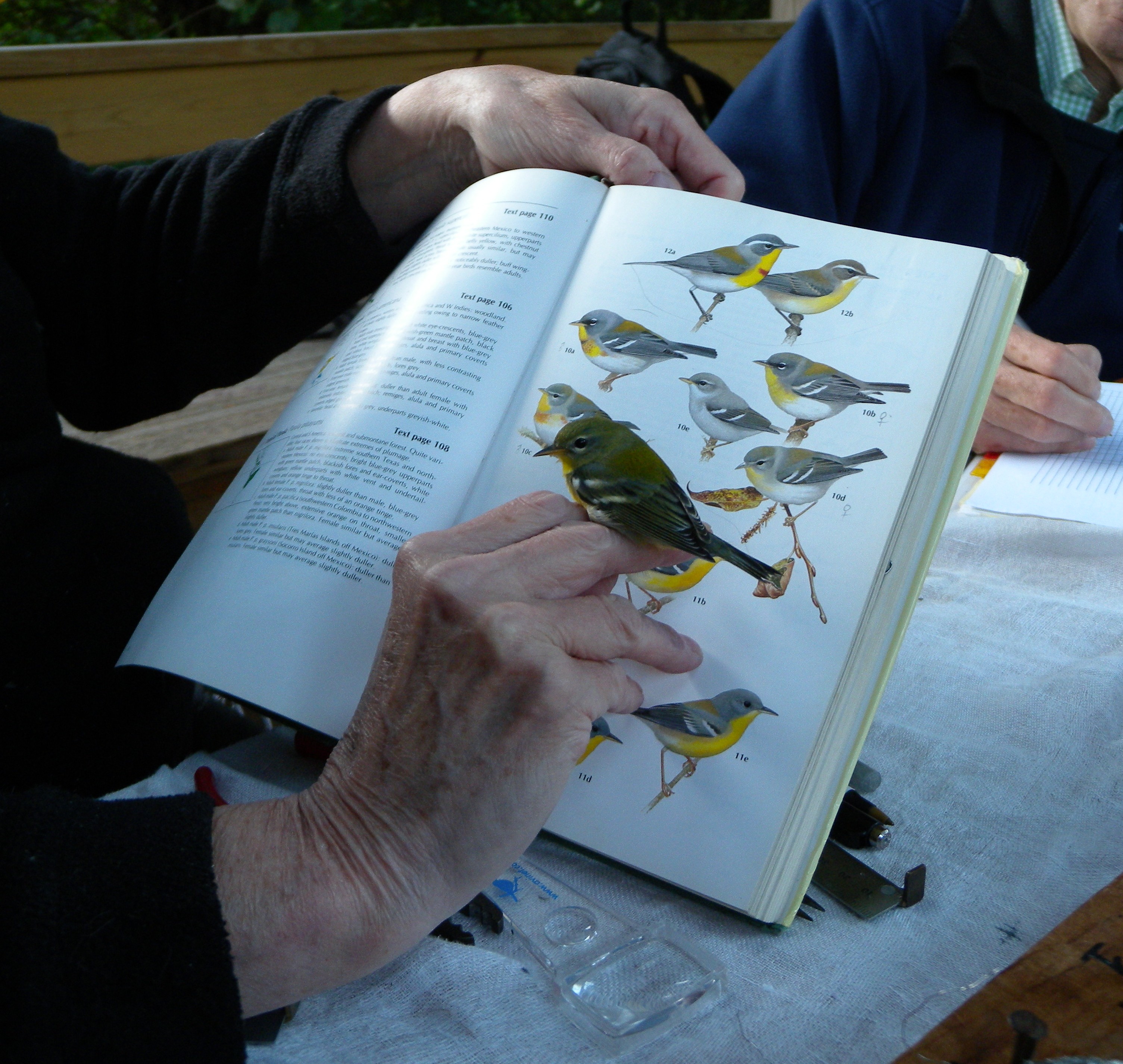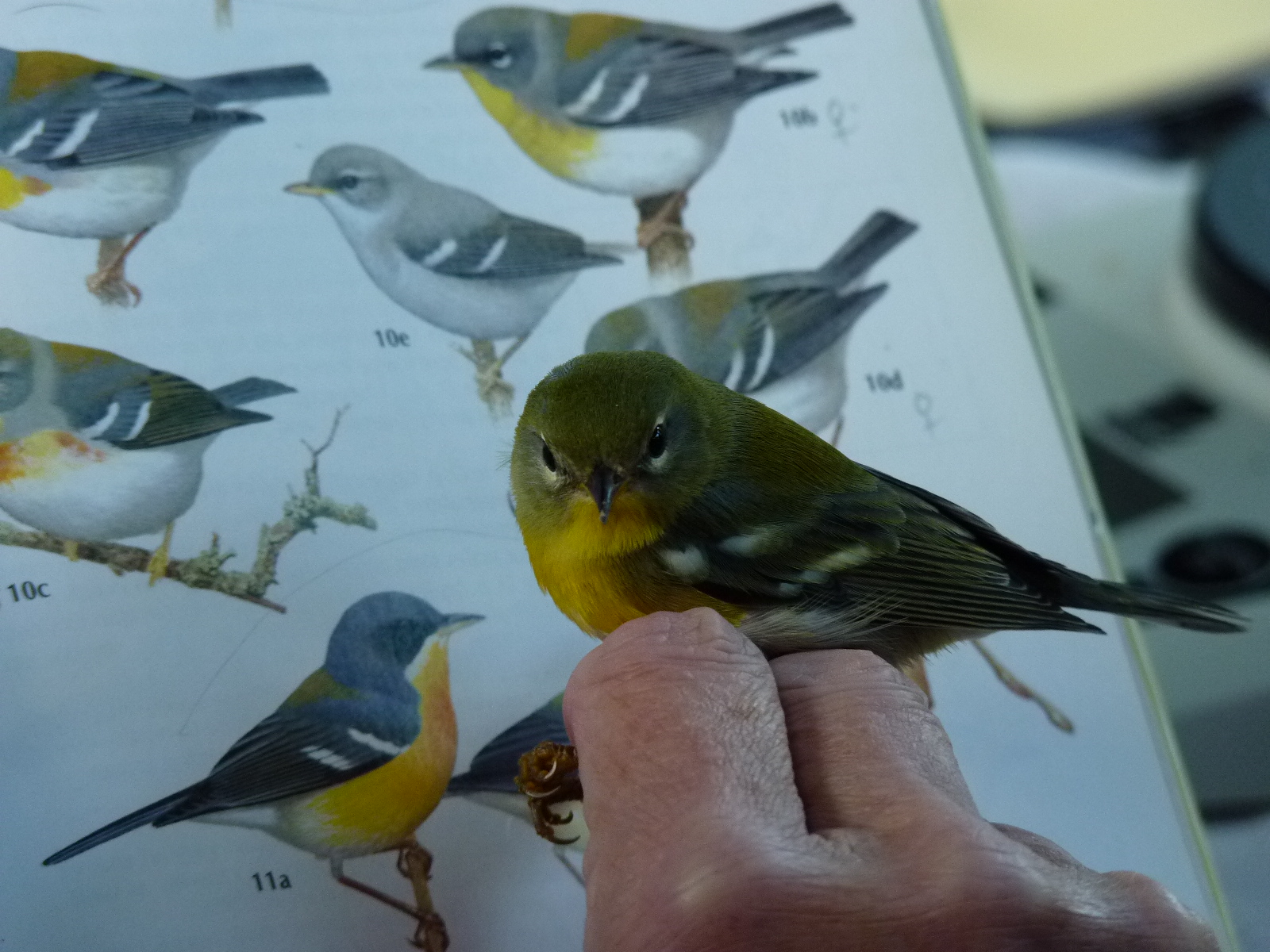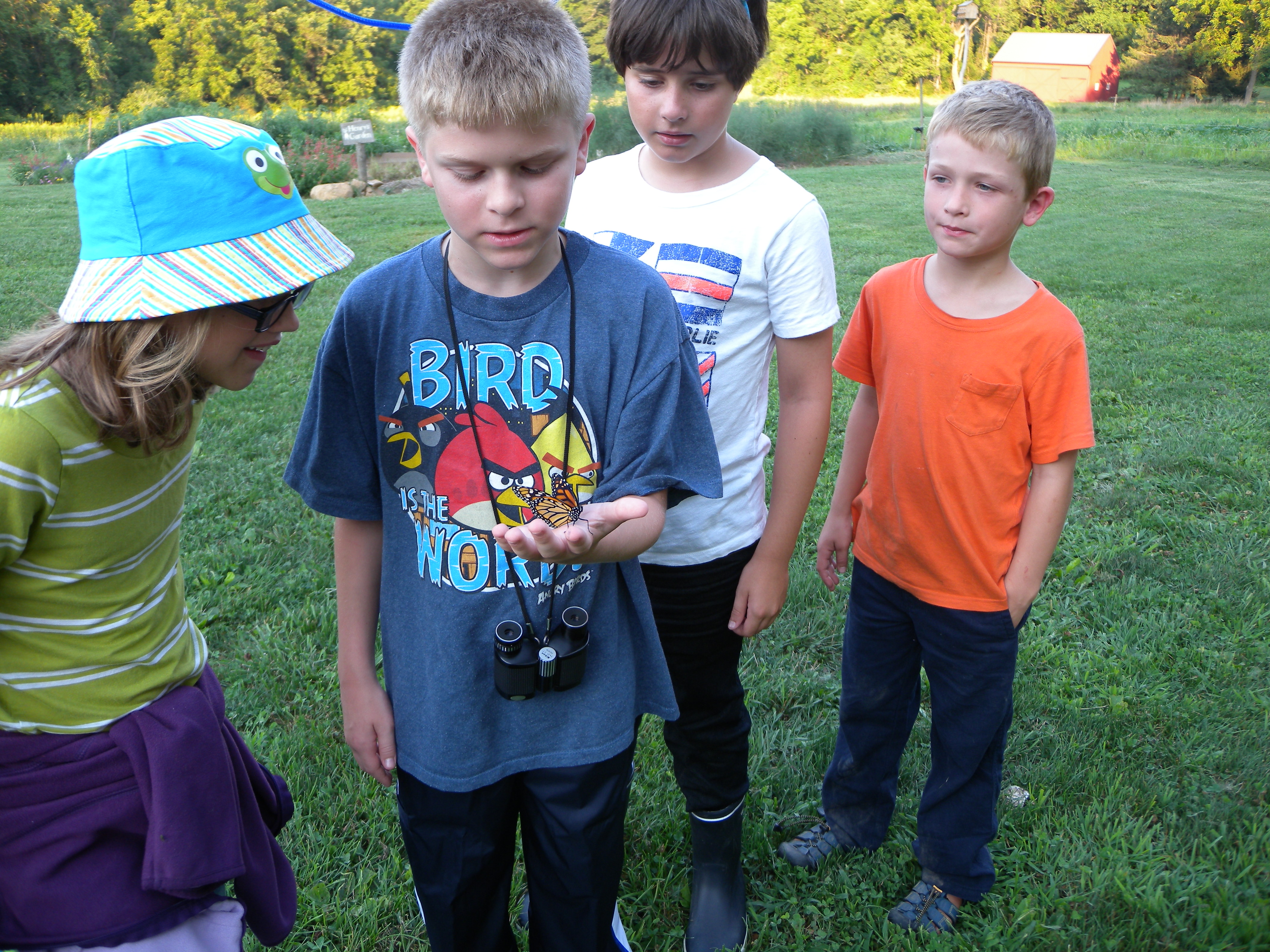
Sandy set us back drastically last week with net lanes filled with water and debris, but public songbird migration banding will resume tomorrow, Tuesday (11/6), the last day for the 2012 songbird banding season. We will open at 5:45am.
The remainder of the fall catch was great with a couple of 80-bird days! White-throated Sparrows began dominating the bounty in late October along with thrushes including Hermit, Swainson’s and Gray-cheeked. Dark-eyed Juncos have joyfully entered the limelight, and flocks of Pine Siskins are around but not in the nets. In the last few weeks of migration, we also banded many Golden-crowned and Ruby-crowned Kinglets, Myrtle Warblers (or butter-butts), Palm Warblers and leftover Black-throated Blue Warblers along with exciting birds like Lincoln’s Sparrow, Field Sparrow, White-crowned Sparrow, our first Blackpoll Warbler of the season, a Savannah Sparrow, a Saw-whet Owl (during the day!) and an exceptionally magnificent WOODCOCK!! We often flush American Woodcocks from the hedgerows in the pre-dawn moments, but we’ve never captured one until now. There’s never a dull moment at the Rushton banding station.
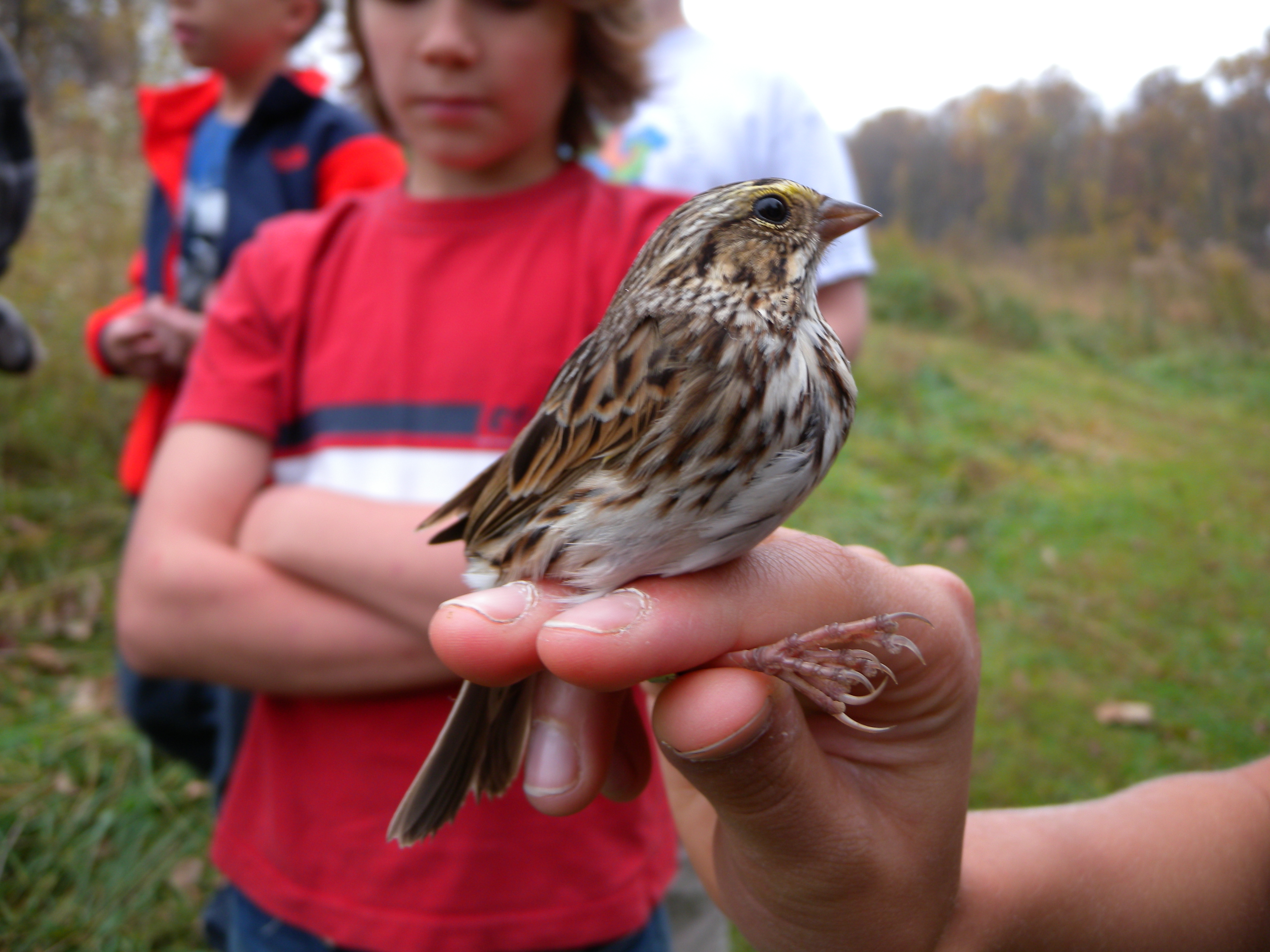
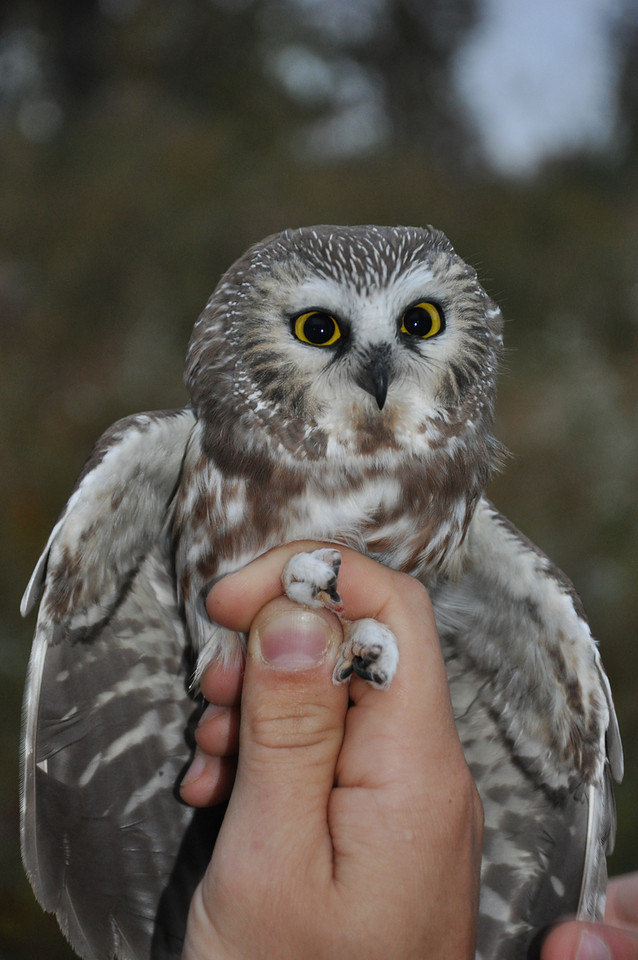




On Friday after Sandy, we braved the frigid air to band over 50 birds of 16 species including a handsome Fox Sparrow (always the last of the winter sparrows to show up) and ANOTHER AMERICAN WOODCOCK. This bird was aged as an adult male as evidenced by the shorter bill length and stubbier wing in addition to a narrower p10 in relation to the female. P10 is the tenth and outermost primary flight feather, which is stiff and narrow in male woodcocks to give their flight the nice twittering sound that gets the lady woodcocks excited during their elaborate aerial courtship displays! Just as fabulous to see up close was the prehensile bill tip that these birds use to feel and grasp their food (earthworms) while probing in the mud. With big beady eyes to see in the dark and precisely camouflaged leaf-like coloring this bird is a spectacular, crepuscular and cryptic beauty!

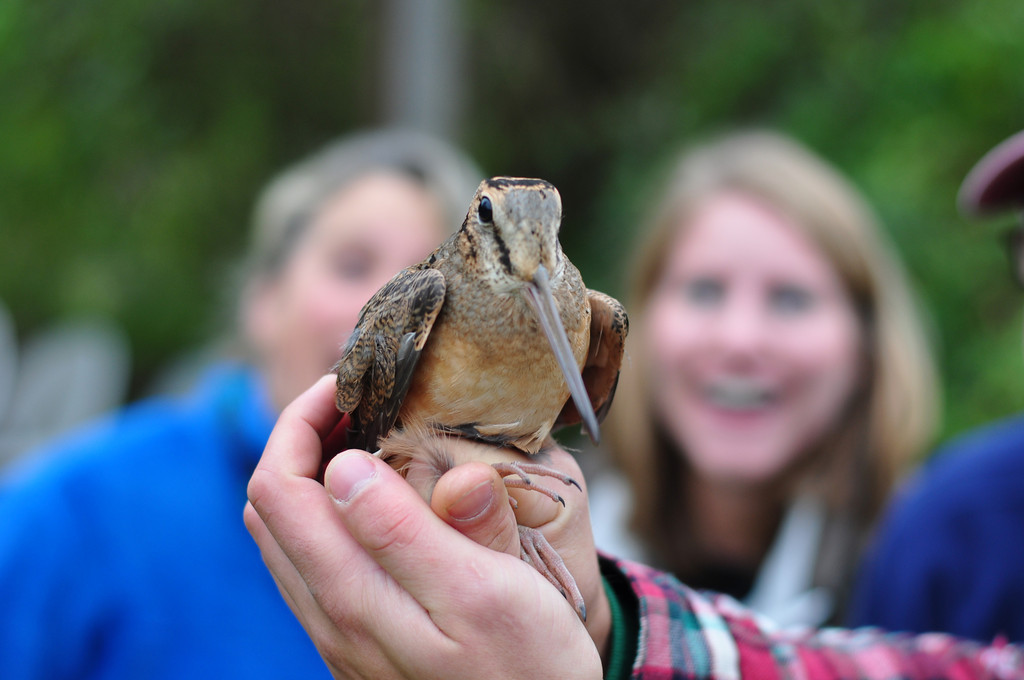






We have had a great songbird season with beautiful birds, wonderful volunteers (thank you all!), delighted visitors of all ages and bright young school groups. Here are some pictures and a link to a wonderful little article in the Abington Friends School blog about the 2nd graders’ “magical” field trip to Rushton Woods Preserve on October 18th to learn about our birds, woods and farm. To our great happiness, the teachers and kids reported, “it was the best field trip ever!”








American Birding Association Visits Rushton Owls on a Record Breaking Night!
On the last Saturday of October, we were thrilled to welcome to Rushton Adrian Binn’s and Deb Beer’s distinguished guests, Jeffrey and Liz Gordon, the passionate President and “First Lady” of the American Birding Association (ABA). The ABA is a nationally recognized non-profit whose mission is to inspire all people to enjoy and protect wild birds through birding and consequently habitat conservation. Check out the ABA website to learn more about this great organization’s mission.
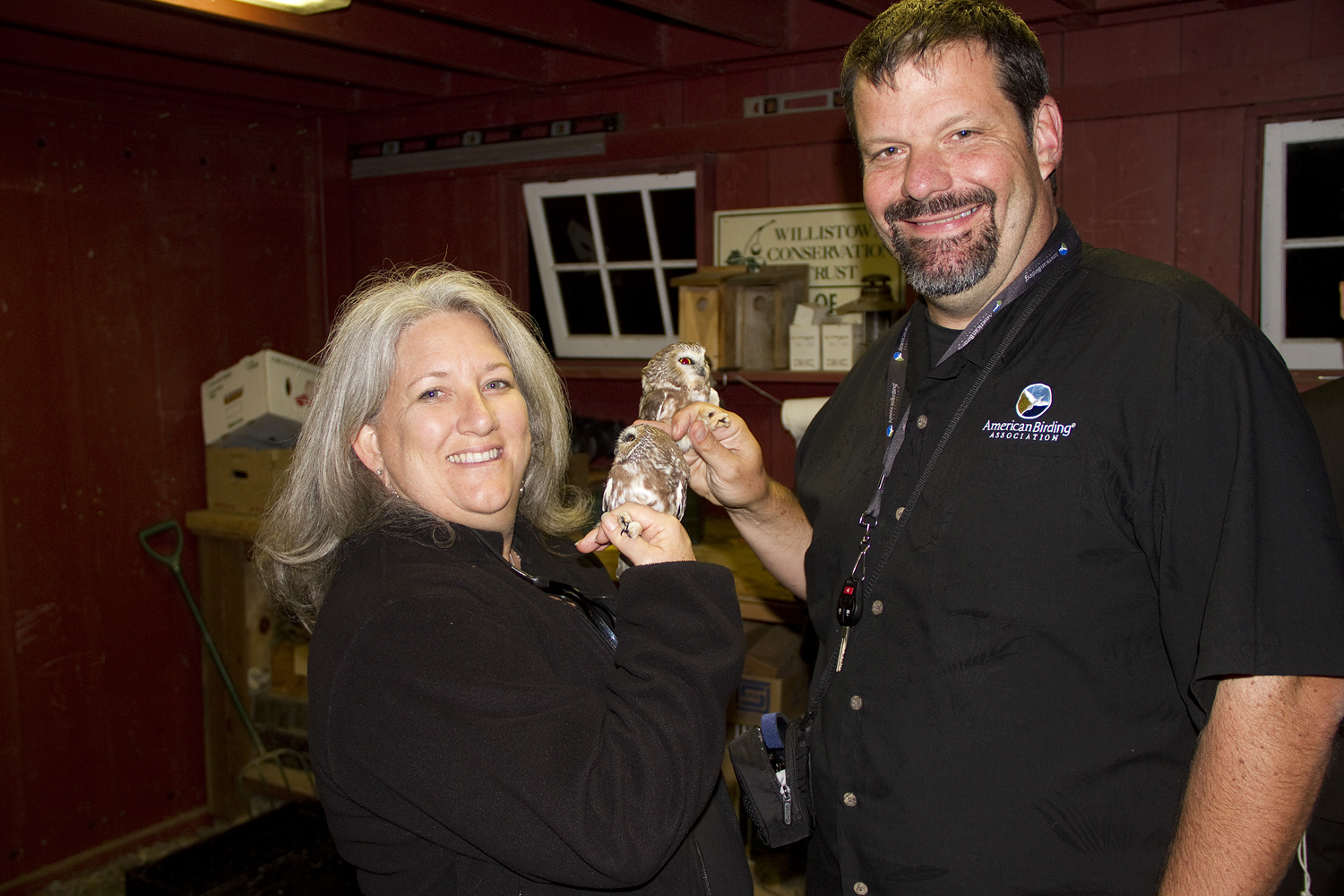
On that special Saturday, October 27th, around 11:30 pm your fabulous Rushton banding crew, accompanied by the American Birding Association, elatedly banded our 92nd new Northern Saw-whet Owl (NSWO) of 2012, surpassing the 2010 season record of 89 new NSWOs! At that time in 2010 we had only just begun banding on October 28th after we got this brand new owl banding station up and running. Even if we had been banding the entire month of October in 2010, we still would not have seen the numbers we are seeing this year because 2010 was a more typical fall born from food scarcity in the north with migration of adults and young peaking around October 31st. This year the peak has occurred much earlier than usual with an influx of fat babies spilling south ahead of their elders after a northern summer of luxury and abundance. While the young owls have been flooding through Rushton for all of October, the adults have only just arrived in very small numbers.

In addition to these 92 “New” Saw-whet Owls never before banded (now 120 as of last night, November 4) , we also catch owls from other banding stations, Foreign Recaptures, like the young owl banded in Ellenville, NY that ended up at Rushton this fall after flying 130 miles south in a week or so. In addition, we catch some of our own banded owls, Retraps. Retraps can linger for days or weeks at Rushton, eating the tasty voles and mice that thrive in the farm’s pesticide-free environment (Thank you, Farmer Fred!). We also catch local Eastern Screech Owls. Counting Screeches, Retraps and Foreign Recoveries, we caught more than 20 additional owls so far this year.
One of our owls banded at Rushton on November 1, 2011, was caught on the north shore of Lake Ontario in Canada on October 16th this year. That bird is over three years old and obviously taking its time traveling back south to Rushton this fall!


As for the Northern Saw-whet Owl public banding schedule, we are banding most nights with Thursday, Friday and Saturday being public. Please reference the last blog entry , which has all the information you need to know about visiting Saw-whet Owl banding, and email Lisa Kiziuk ( lkr@wctrust.org) to make a reservation.
Doris McGovern, Rushton’s Master Bird Bander, spelled out our mission beautifully:
“Our goal is to contribute data to the continent wide Saw-whet Owl banding network. We report owl data to the USGS where it becomes part of a national data base for researchers. We currently mentor college grads who need research skills, such as bird banding. We share our knowledge of owl biology with school groups, home schoolers, scouts, CSA members, local bird clubs and interested adults.”
“We want you to be proud of all that your WCT owl banding team does while you are comfy in your soft, warm bed and we are shivering in a cold, drafty barn with our fingers bleeding from the sharp talons of those cute little Saw-whets you love so much. Are you drinking hot cocoa? We love hot anything,” tweets Doris McGovern.

PA Young Birders and Owls
The PA Young Birder (PAYB) Owl Night on October 19th was a hit! Over 60 people (including 35 children) enjoyed the night through an owl’s point-of-view and learned about the science behind bird banding. Eight Northern Saw-whet Owls bravely presented themselves to the crowd for banding and photographing and “oohing and awing”. Other highlights of the night included creating masterful owl art with Adrian Binns, telescopic moon gazing with Deb Beer, and enchanting (albeit muddy) night hikes with me, Blake Goll.





The next PAYB event is “Owl Night for Teens,” this Friday November 9th, 7-9pm. All kids, 13 and over, are invited to learn about Saw-whet Owl banding and hopefully see some of these little woodland elves. Other activities may include exploring the farm garden, star gazing and night hikes. Please RSVP to me, Blake Goll (bhg@wctrust.org).
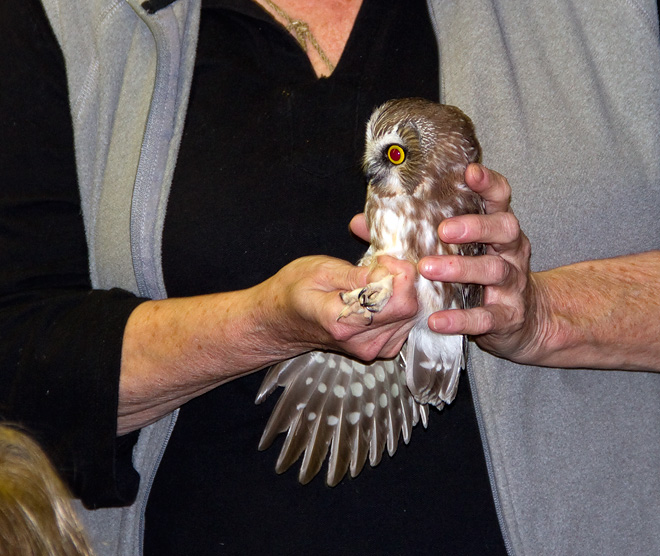
Stephen Kress of “Project Puffin” To Speak at Delaware Valley ornithological club (dVOC) Banquet November 15
Dr. Stephen Kress is the director of the National Audubon Society’s “Project Puffin”, which re-established nesting Atlantic Puffin colonies on islands off the Maine coast. He will speak in Philadelphia on Nov 15 about “Restoring endangered seabirds: lessons learned from puffins and terns.” I have heard this inspiring man speak about his work at Hog Island in Maine, and I can tell you that he is an exceptional presenter who will make you want to move mountains. Please click here for more information about Stephen Kress, to learn why seabirds are threatened worldwide and to register for the DVOC annual banquet.

Knowledge gained from this successful program is being used worldwide in seabird conservation. Here is sneak preview that will give you an idea of how good this lecture will be: http://www.youtube.com/watch
Enjoy the waning days of fall!




